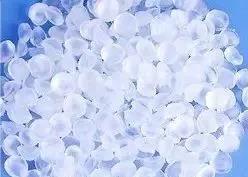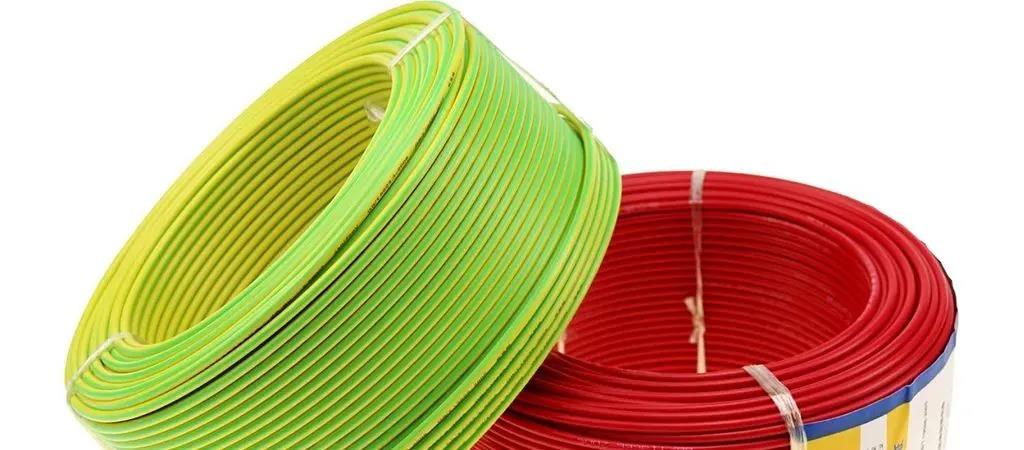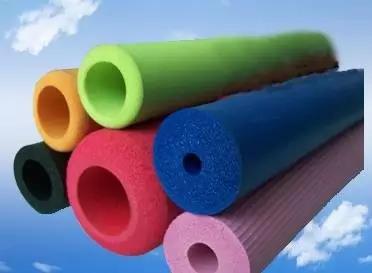1、 Troubleshooting of common faults in injection molding of ACSR Cables
Under note
Fault analysis and Troubleshooting:
(1) The temperature of the melt is too low. The forming temperature should be increased properly.
(2) Forming cycle is too short. It should be extended appropriately.
(3) Insufficient injection pressure. It should be improved appropriately.
(4) The injection rate is too slow. It should be accelerated appropriately.
(5) Insufficient supply. The supply shall be increased.
(6) The temperature of the die is too low, so it should be properly raised. In particular, the cooling circuit of the mold should be set reasonably to keep the temperature of the mold uniform.

(7) The shape and structure of plastic parts are not designed reasonably or the wall is too thin. Adjustments should be made in the event of possible changes.
(8) The structure size of the pouring system is small. Gate and runner sections shall be enlarged appropriately.
(9) The exhaust of the mold is poor. The exhaust hole should be added to improve the exhaust performance of the AAAC Cables.
(10) The strength of the die is not enough. The rigidity should be improved as much as possible.
· shrinkage marks
Fault analysis and Troubleshooting:
(1) The barrel temperature is too high. The barrel temperature shall be properly reduced.
(2) Insufficient injection pressure. It should be improved appropriately.
(3) The holding time is too short. It should be extended appropriately.
(4) The cooling time is too short. The cooling efficiency shall be improved or the cooling time shall be prolonged.
(5) Insufficient supply. The supply shall be increased.
(6) The temperature of the die is not uniform. The cooling system of the mould should be adjusted and the cooling circuit should be set reasonably.
(7) The shape structure design of plastic parts is unreasonable or the wall of plastic parts is too thick. Adjustments should be made where possible.
(8) Gate cross section is too small. It should be increased appropriately.
· weld marks
Fault analysis and Troubleshooting:
(1) The temperature of the melt is too low. The forming temperature should be increased properly.
(2) Insufficient injection pressure. It should be improved appropriately.
(3) The injection rate is too slow. It should be accelerated appropriately.
(4) The temperature of the die is too low, so it should be properly raised.
(5) The gate section is too small. It should be increased appropriately.
(6) Poor exhaust of mould. The exhaust hole should be added to improve the exhaust performance of the die.
(7) The structure size of cold material hole is too small or the position is not correct. It should be adjusted reasonably.
(8) Impurities are mixed in the raw materials. Foreign matters and impurities shall be removed thoroughly or new materials shall be used.
(9) The dosage of release agent is too much. The amount of the product should be minimized.
(10) The insert is not set up reasonably. It should be adjusted appropriately.
(11) The raw material is not uniformly colored. The colorant with good dispersibility and the mixing time should be prolonged to make the raw material coloring even.
Flow marks
Fault analysis and Troubleshooting:
(1) The temperature of the melt is too low. The forming temperature should be increased properly.
(2) Insufficient injection pressure. It should be improved appropriately.
(3) The holding time is too short. It should be extended appropriately.
(4) The temperature of the die is too low, so it should be properly raised.
(5) The temperature of the die is not uniform. The cooling system of the mould should be adjusted and the cooling circuit should be set reasonably.
(6) Gate cross section is too small. It should be increased appropriately.
(7) The structure size of cold material hole is too small or the position is not correct. It should be adjusted reasonably.
(8) The raw material is not uniformly colored. The color additive with good dispersibility should be selected, and the mixing time should be prolonged.

Poor gloss
Fault analysis and Troubleshooting:
(1) The temperature of the melt is too low. The forming temperature should be increased properly.
(2) The molding cycle is too long. It should be shortened appropriately.
(3) Screw back pressure is too low. It should be improved appropriately.
(4) The temperature of the die is too low, so it should be properly raised.
(5) The structure size of the pouring system is small. Gate and runner sections shall be enlarged appropriately.
(6) Poor exhaust of mould. The exhaust hole should be added to improve the exhaust performance of the die.
(7) Impurities are mixed in the raw materials. Foreign matters and impurities shall be removed thoroughly or new materials shall be used.
(8) The dosage of release agent is too much. The amount of the product should be minimized.
(9) Raw materials are not fully dried. The drying temperature and time should be increased appropriately.
· bubbles
Fault analysis and Troubleshooting:
(1) The barrel temperature is too high. The barrel temperature shall be properly reduced.
(2) The molding cycle is too long. It should be shortened appropriately.
(3) Insufficient injection pressure. It should be improved appropriately.
(4) The injection speed is too fast. It should be slowed down appropriately.
(5) The holding time is too short. It should be extended appropriately.
(6) The temperature of the die is not uniform. The cooling system of the mould should be adjusted and the cooling circuit should be set reasonably.
(7) The shape structure design of plastic parts is unreasonable or the wall of plastic parts is too thick. Adjustments should be made where possible.
(8) Gate cross section is too small. It should be increased appropriately.
(9) The exhaust of the mold is poor. The exhaust hole should be added to improve the exhaust performance of the die.
(10) Raw materials are not fully dried. The drying temperature and time should be increased appropriately.
? uneven color
Fault analysis and Troubleshooting:
(1) The barrel temperature is too high. The barrel temperature shall be properly reduced.
(2) The molding cycle is too long. It should be shortened appropriately.
(3) The raw material is not uniformly colored. The color additive with good dispersibility should be selected, and the mixing time should be prolonged.
Burnt and black
Fault analysis and Troubleshooting:
(1) The barrel temperature is too high. The barrel temperature shall be properly reduced.
(2) The molding cycle is too long. It should be shortened appropriately.
(3) The injection pressure is too high. It should be reduced appropriately.
(4) The injection rate is too fast. It should be slowed down appropriately.
(5) Screw back pressure is too high. It should be reduced appropriately.
(6) Gate cross section is too small. It should be increased appropriately.
(7) The exhaust of the mold is poor. The exhaust hole should be added to improve the exhaust performance of the die.
(8) The dosage of release agent is too much. The amount of the product should be minimized.
(9) Raw materials are not fully dried. The drying temperature and time should be increased appropriately.
· overfill edge

Fault analysis and Troubleshooting:
(1) The temperature of the melt is too high. The temperature of the barrel and the nozzle shall be properly reduced.
(2) The injection pressure is too high. It should be reduced appropriately.
(3) The injection rate is too fast. It should be slowed down appropriately.
(4) The holding time is too long. It should be shortened appropriately.
(5) There is too much supply. It should be reduced appropriately.
(6) The closing force is insufficient. It should be improved appropriately.
(7) The mold temperature is too high. It should be reduced appropriately.
(8) The shape structure design of plastic parts is unreasonable, and should be adjusted appropriately in case of possible changes.
(9) The strength of the die is not enough. We should try to increase its rigidity.
(10) The insert is not set up reasonably. According to the shape of plastic parts and the structure of the mold, proper adjustment shall be made.
Warping and deformation
Fault analysis and Troubleshooting:
(1) The barrel temperature is too low. It should be improved appropriately.
(2) Forming cycle is too short. It should be extended appropriately.
(3) The injection pressure is too high. It should be reduced appropriately.
(4) The injection speed is too fast. It should be slowed down appropriately.
(5) The holding time is too long. It should be shortened appropriately.
(6) The mold temperature is too high. It should be reduced appropriately.
(7) The cooling system of the mould is not reasonable, and the cooling circuit should be set reasonably according to the cooling requirements of the plastic structure.
(8) Gate cross section is too small. It should be increased appropriately.
(9) The setting of ejector is unreasonable. The area of jacking out and the point of jacking shall be increased as much as possible.
(10) The strength of the die is not enough. We should try to increase its rigidity.
· delamination
Fault analysis and Troubleshooting:
(1) If the melt temperature is too low, the temperature of the barrel and nozzle should be increased properly.
(2) The injection rate is too fast. It should be slowed down appropriately.
(3) The mold temperature is too low. It should be improved appropriately.
(4) Impurities are mixed in the raw materials. Foreign matters and impurities shall be removed thoroughly or new materials shall be used.
? discoloration of the surface
Fault analysis and Troubleshooting:
(1) The barrel temperature is too high. It should be reduced appropriately.
(2) The molding cycle is too long. It should be shortened appropriately.
(3) The injection rate is too fast. It should be slowed down appropriately.
(4) Screw back pressure is too high. It should be reduced appropriately.
(5) The gate section is too small. It should be increased appropriately.
(6) Poor exhaust of mould. The exhaust hole should be added to improve the exhaust performance of the die.
(7) Impurities are mixed in the raw materials. Foreign matters and impurities shall be removed thoroughly or new materials shall be used.
2、 Troubleshooting of common faults in injection molding of soft PVC
Poor gloss on the surface of the product
Fault analysis and Troubleshooting:
(1) The processing temperature is too low, and the material is not plasticized. The processing temperature should be improved properly to improve the plasticizing effect.
(2) The mold temperature is too low. The mold temperature should be increased appropriately.
(3) The material fluidity is too bad, the raw material should be replaced or the raw material formula should be adjusted.
(4) The surface finish of mold cavity is too poor. The surface finish of mold cavity should be improved properly.
(5) During the forming process, the auxiliary agent precipitates, and forms scaling on the surface of the mold. The mold surface scale should be removed in time. If it is serious, the formula should be adjusted.
(6) Too much recycled material. The amount of recycled material shall be reduced appropriately.
(7) The material temperature is too high, and the resin is decomposed. The injection temperature should be reduced and the thermal stability system should be improved.
? shrinkage deformation
Fault analysis and Troubleshooting:
(1) The holding time is too short. The time of pressure preservation should be prolonged, especially when shrinkage occurs near the gate, the method of prolonging the pressure holding time can be used to solve.
(2) The pressure holding pressure is too low. The pressure holding time should be improved properly.
(3) Injection pressure is too low. Injection time should be improved appropriately.
(4) The molding temperature is too high. The forming temperature shall be reduced appropriately.
(5) The amount of feed is insufficient. The amount of feed shall be increased appropriately.
(6) The mold temperature is too high or the heating is uneven. The cooling efficiency of the mould should be improved.
(7) The mold is opened too early and the product cooling is insufficient. The cooling time of the product in the mold shall be extended.
(8) The thickness difference of the products is too big, and the parts of the thickness of the products in process are prone to sag shrinkage due to the insufficient pressure. The design of the product shall be modified.
(9) Gate cross section is too small. It should be increased appropriately.
Under injection, lack of material
Fault analysis and Troubleshooting:
(1) Injection pressure or pressure retaining pressure is too low. Injection pressure or pressure retaining pressure should be increased appropriately.
(2) The holding time is too short. The holding time shall be extended appropriately.
(3) The processing temperature is too low. The processing temperature should be raised appropriately.
(4) The injection rate is too slow. The injection speed should be increased appropriately.
(5) The temperature of the mold or nozzle is too low. The temperature of the mold or nozzle shall be increased appropriately.
(6) Impurities or decomposition are blocked at the nozzle. The injection molding machine nozzles shall be cleaned.
(7) The gate section is too small. It should be increased appropriately.
(8) The exhaust hole of the mold is blocked. The plug in the die vent should be removed.
(9) Injection rate of injection molding machine is too small. The injection volume should be increased appropriately.
Coking decomposition
Fault analysis and Troubleshooting:
(1) The injection temperature is too high, the material is coking and decomposed, and the focus of the product is formed with the injection mold of the molten material. The injection temperature should be properly reduced to remove foreign matters from the dead angle of the barrel and the runner.
(2) Injection speed is too high. The injection rate should be reduced properly.
(3) Impurities or decomposition are blocked at the nozzle. The injection nozzle shall be cleaned.
(4) The thermal stability of raw materials is too poor. The material should be replaced or the formula adjusted to improve the thermal stability system.
(5) The lubricant is not used enough. The lubricant dosage should be increased appropriately.
(6) Poor exhaust of mould. The die exhaust system should be improved.
(7) The gate section of the mold is too small. The gate section of the mold shall be expanded appropriately.
